Waist vs. Waste
What is the difference?
It is easy to confuse waist and waste in English. Both of them sound the same, but they mean different things. They are also spelled differently.
It is important that you do not confuse them because their meanings are not the same. How do you know when to use waste and when to use waist? The examples below will show you when to use each word.
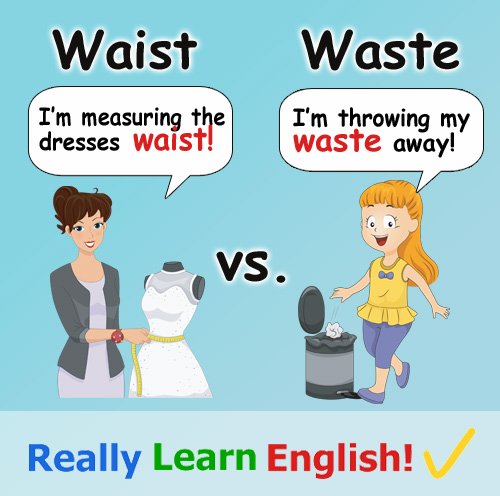
Let's look at some examples to help you understand the difference.
Click Here for Step-by-Step Rules, Stories and Exercises to Practice All English Tenses
Waist
Waist is a noun. It refers to the part of the body that is covered by a belt-the area above the hips and below the ribs.

Examples:
- She measured her waist so she could buy the correct dress size.
(She measured the part of her body below the ribs and above her hips.)

- Her waist is too big for that belt.
(The belt doesn't fit because her body is too big where the belt should go.)
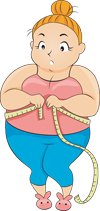
- Those pants do not fit well around my waist.
(The part of the pants above my hips are not the right size.)

- His waist is slim, so it is hard for him to find jeans that fit.
(The part of his body below his ribs is small, so the jeans are too big.)

- I like how the skirt looks around my waist.
(The skirt looks nice above my hips.)

Waste
"Waste" can be a verb, a noun, or an adjective. As a noun, it means something that is not wanted or not useful. As an adjective, it describes another word by showing that it is not wanted or useful. And as a verb, it means not to use something well.
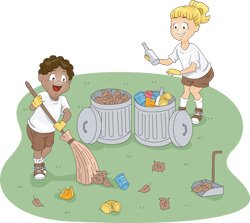
Two common expressions with "waste" are:
- A waste of breath: something you shouldn't say because it won't make a difference.
- A waste of time: something you shouldn't do because it won't matter

Examples:
- Please don't waste the chicken-it costs a lot of money.
(If you don't eat the chicken, you have to throw it out and get no benefit from the money.)

- The waste paper was put into the trash can.
(Paper you don't need is thrown away.)
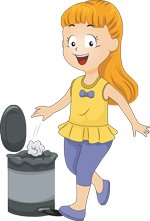
- Students, please clean up the waste after you finish.
(The teacher wants the students to put the materials they did not use in the trash.)

- I hate to waste money.
(If I spend money on things I don't want or need, then I don't get anything from the money.)

Tips
How can you remember which is which? They both share the letters w, s, and t. "Waste" has an "e," but you don't say the "e." That means that the "e" in "waste" is "wasted"! "Waist" has an "i" in the middle-a skinny little letter "i." Most people wish that they had a skinny "waist," so you can remember that "waist" is the one with the "i" in the middle.
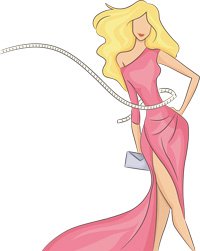
A Story to Practice Waste vs. Waist
Jennifer wanted a new dress. She had a blue dress in her closet, but the waist did not fit well because she had grown. She decided to make a dress herself!
She drove to a fabric store, but they did not have anything that she liked. "What a waste of time!" she thought. Then she drove to another fabric store. She held a red fabric up to her waist and looked in the mirror. She liked it, so she asked the clerk for four yards of fabric. The clerk accidentally cut two yards. The manager was not happy with the clerk for wasting fabric.
Jennifer went home and cut out the fabric. She threw the waste fabric into the trash can. Her mother saw it and said, "Don't waste that! I can save it for the blanket that I will sew." Then she asked her daughter why she was making a new dress. Jennifer replied that her old one was too tight around the waist. Her mother asked, "I hope you measured your waist carefully so this dress fits well." She said, "I did. You will see that this dress fits me perfectly!" And, when she saw it, her mom agreed.

Quiz
Answer the following 10 questions and then check your answers. Each question is worth 10 points.
Part 1:
- Which of the following is a correct definition of waste?
- To make useless
- To plan
- To run quickly
- To manage
- Which of the following is a correct definition of waist?
- The part of the body below the knee
- The part of the body where the hand connects to the arm
- The back of the head
- The part of the body above the hips and below the ribs
- Which sentence is written correctly?
- Use this tape measure to measure your waste.
- Please don't waist the bread.
- Throw out your waste paper.
- Her waste is slender.
- Which of the following is written incorrectly?
- That belt is too long for his.
- The pants are too tight on my waist.
- He wasted twenty dollars on a game.
- The waist paper is on the shelf.
Part 2:
- Please don't _____ any more money.
- Waste
- Waist
- Wasted
- Wasting
- The wedding dress bunches up on her _______.
- Waist
- Waste
- Wasting
- Wasted
- She ______ three hours waiting in the line
- Waisted
- Wasted
- Waist
- Waste
- Don't _____ your breath-she will never change her mind.
- Waist
- Waste
- Wasted
- Waster
- That belt looks nice on your _____..
- Waist
- Waste
- Waster
- Wasting
- Look at all that _______ space. Why don't you put something there?
- Waisted
- Wasting
- Waist
- Wasted
Answer Key
Part 1: 1. A | 2. C | 3. B | 4. D
Part 2: 1. B | 2. A| 3. A | 4. C | 5. D | 6. C
Get Updates, Special Offers, and English Resources
Download your FREE GIFT (the first two chapters of
English Short Stories Book and Workbook)
as soon as you join!

By submitting your email, you consent to receiving updates and newsletters from us and to the sharing of your personal data with third parties for the purposes of sending you communications. We will not spam you. You can unsubscribe at any time. For more information, please see our privacy policy.





